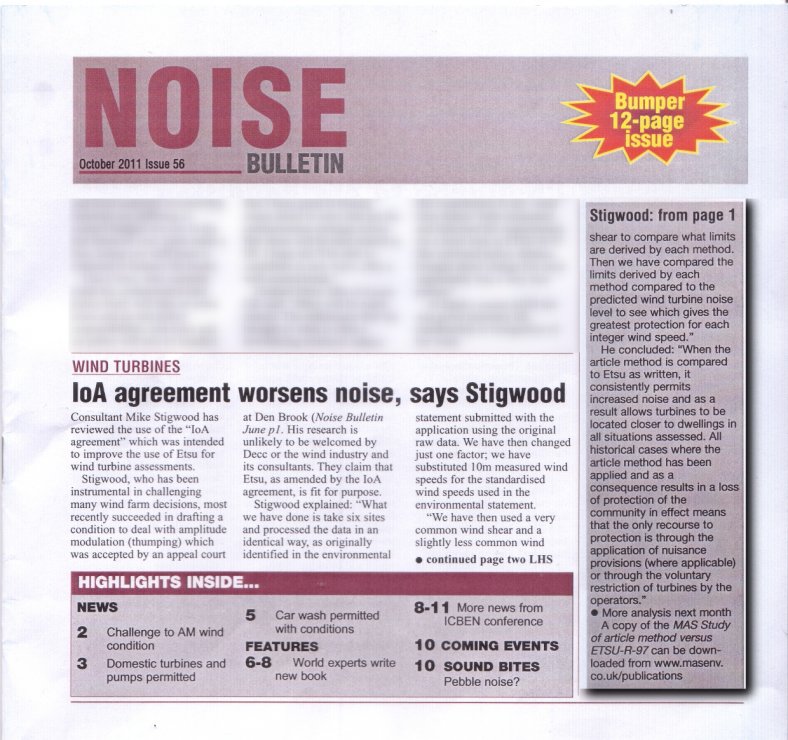
WIND TURBINES
IoA agreement worsens noise, says Stigwood
Consultant Mike Stigwood has reviewed the use of the "IoA agreement" which was intended to improve the use of Etsu for wind turbine assessments.
Stigwood, who has been instrumental in challenging many wind farm decisions, most recently succeeded in drafting a condition to deal with amplitude modulation (thumping) which was accepted by an appeal court at Den Brook (Noise Bulletin June pl. His research is unlikely to be welcomed by Decc or the wind industry and its consultants. They claim that Etsu, as amended by the IoA agreement, is fit for purpose.
Stigwood explained: "What we have done is take six sites and processed the data in an identical way, as originally identified in the environmental statement submitted with the application using the original raw data. We have then changed just one factor; we have substituted 10m measured wind speeds for the standardised wind speeds used in the environmental statement.
"We have then used a very common wind shear and a slightly less common wind shear to compare what limits are derived by each method. Then we have compared the limits derived by each method compared to the predicted wind turbine noise level to see which gives the greatest protection for each integer wind speed."
He concluded: "When the article method is compared to Etsu as written, it consistently permits increased noise and as a result allows turbines to be located closer to dwellings in all situations assessed. All historical cases where the article method has been applied and as a consequence results in a loss of protection of the community in effect means that the only recourse to protection is through the application of nuisance provisions (where applicable) or through the voluntary restriction of turbines by the operators."
– More analysis next month
A copy of the MAS Study of article method versus ETSU-R-97 can be downloaded from www.masenv.co.uk/publications
